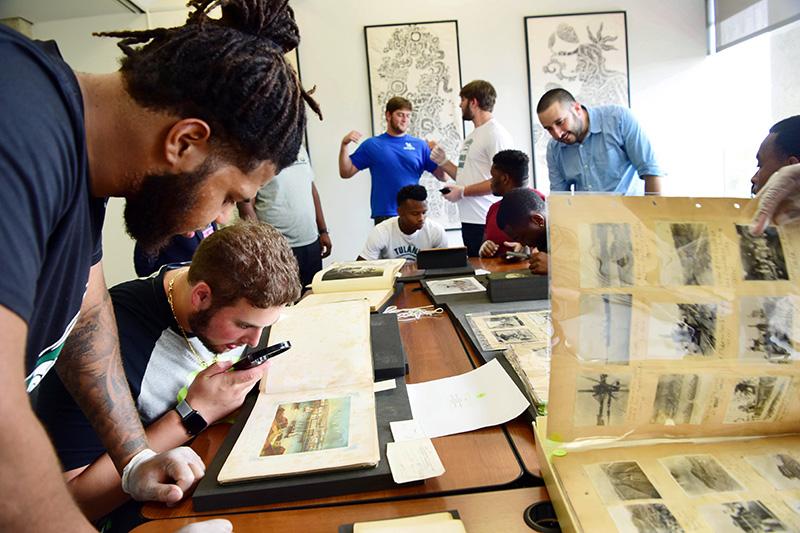Students get hands-on experience with Latin American artifacts
A new course, DIY History: Latin America, encourages Tulane undergraduates to take a hands-on approach as they learn archival research skills and master techniques to create innovative projects.
Felipe Cruz, an assistant professor of history in the School of Liberal Arts, leads the summer course, which provides access to cutting-edge tools at the Tulane Maker Space and artifacts housed at the Latin American Library.
“Students learn important professional skills in terms of research analysis and communicating their findings clearly,” said Cruz.
“People will be able to interact and play with the exhibit.”
— Felipe Cruz, assistant professor of history in the School of Liberal Arts
In June, the students investigated the Latin American Library’s special collections with the goal of creating an interactive museum exhibit as their final project.
“The library’s director, Hortensia Calvo, and archivist, Christine Hernández, worked closely with us to provide access to rare artifacts, like early Mesoamerican manuscripts,” said Cruz. “We spent the last week working with 3D printers and laser cutters in the Maker Space to build the exhibit.”
Divided into three groups, the class produced different facets of the public exhibit, which will be displayed at the library.
One group used augmented reality technology to make an interactive replica of an early map of Tenochtitlan — the capital city of the Aztec Empire. Using a tablet, guests can uncover virtual markers on the map indicating important locations throughout the city. Tapping on the markers shows articles, photos and archaeological sketches of each location.
Another student project digitized stereographs, pictures composed of two images that create a three-dimensional effect when viewed. Using lenses, wood and a laser cutter, they assembled stereoscopes for visitors to view 19th century 3D photos.
“The library also has a great collection of archaeological rubbings,” said Cruz.
A third student group scanned rubbings of Mayan carvings depicting ancient animals, processed the images and then built a re-creation of the original carvings. The exhibit will have sketch paper for guests to make their own archaeological rubbings to take home.
“People will be able to interact and play with the exhibit, ” said Cruz.

